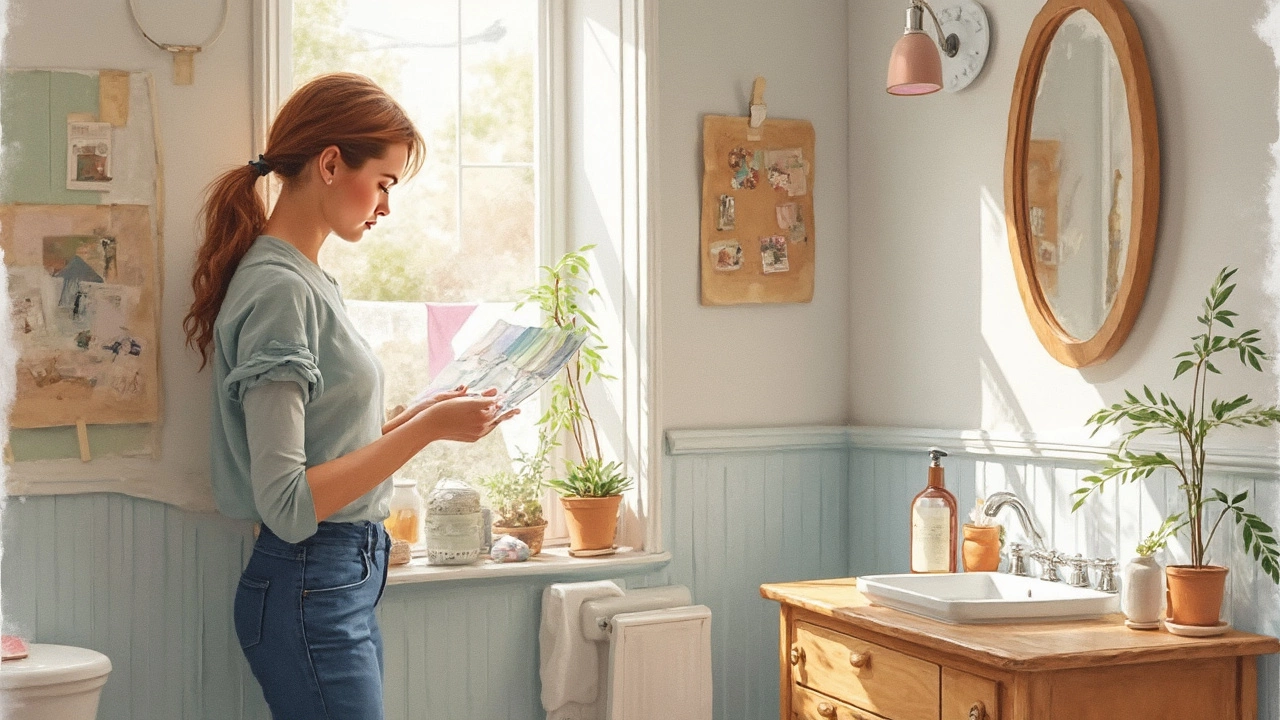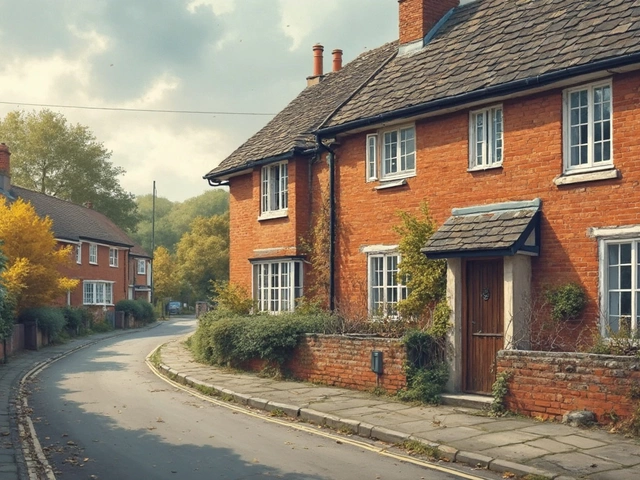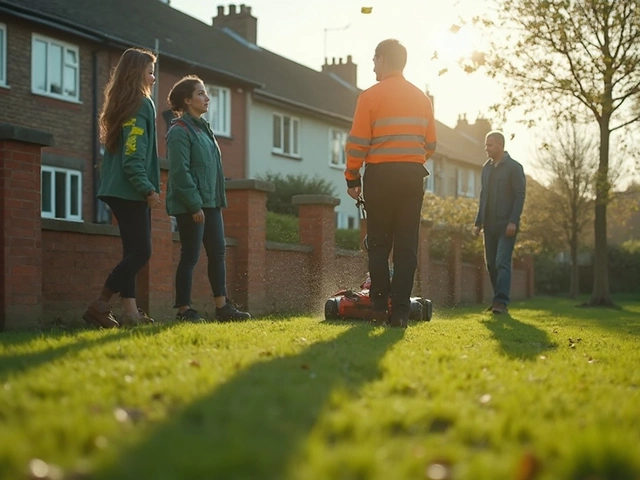Remodeling a bathroom sounds easy until you start adding up what everything costs. Before you know it, those “small changes” can eat through your savings faster than you’d expect. If you’re working with a small bathroom—think five feet by eight feet—you’re not off the hook, but you can control the damage with the right plan.
So, what’s a reasonable budget? Most people land somewhere between $5,000 and $15,000 for a small bathroom remodel, depending on how fancy you get. You could shave that down under $5,000 if you keep everything basic and do some work yourself. On the flip side, tile walls, custom vanities, and that rainfall showerhead you’ve been eyeing can blow up your costs quickly.
The key is knowing what you actually need versus what you want. For example, swapping out the toilet or lighting usually brings serious value without breaking the bank. But when you start moving plumbing around or expanding the shower, brace for a bigger hit on your wallet. Want a tip that saved me and Lara a ton? Replacing cabinet hardware and giving the walls a fresh paint job did wonders before we touched any big-ticket items.
- What Does a Small Bathroom Remodel Really Cost?
- Where Does the Money Go?
- Smart Ways to Save Without Sacrificing Quality
- Red Flags and Hidden Expenses
What Does a Small Bathroom Remodel Really Cost?
If you’re hoping to keep your small bathroom remodel affordable, you’ve got to pin down the numbers early. The national average for a small bathroom renovation sits between $7,000 and $12,000 as of early 2025. But real talk? You can get the job done for as low as $4,000 if you’re sticking to basics and making smart choices. On the other hand, if you want all the top-shelf finishes, you could shell out over $20,000—especially if you’re in a high-cost city or aiming for a designer magazine vibe.
According to HomeAdvisor, "The average homeowner spends $10,978 on a bathroom remodel, with most falling between $6,000 and $15,000."
The average homeowner spends $10,978 on a bathroom remodel, with most falling between $6,000 and $15,000. — HomeAdvisor
Location is a big deal. If you’re in a city like San Francisco or New York, everything costs more. But outside those hotspots, tile, fixtures, and labor are usually a bit less pricy.
| Remodel Type | Low-End Cost | Average Cost | High-End Cost |
|---|---|---|---|
| Basic Refresh (DIY, simple fixtures) | $2,500 | $4,000 | $7,500 |
| Mid-Range (some new plumbing, new tiles, pro labor) | $7,000 | $10,000 | $15,000 |
| High-End (custom everything, luxury fixtures) | $15,000 | $20,000 | $30,000+ |
It’s easy to get sticker shock. Price swings happen because of a few big factors:
- How much you change the layout
- The quality of the bathroom remodel products and finishes
- DIY work versus hiring pros
- Where you live
If you really want to stretch your budget, focus on cosmetic updates first: paint, new faucet, upgraded lighting. Save the gut job for when you’re ready to commit more cash or if there’s something seriously wrong, like water damage or ancient plumbing.
Knowing these ballpark numbers and what shapes them is the best way to avoid spending more than you really need to. You can make your small bathroom remodel work for you—no need to drain your bank account.
Where Does the Money Go?
You glance at your small bathroom and it feels like there shouldn’t be that much to spend money on, right? But a small bathroom remodel comes with its own set of sneaky expenses. Let’s break down the main places your cash ends up disappearing.
First up, labor costs are the biggest chunk. Even in a tiny space, you’re paying skilled trades like plumbers, electricians, and tilers. On average, labor can take up 40% to 60% of your bathroom budget. If you hire a general contractor, they’re coordinating all the moving parts, which means you pay for their expertise too.
Then you’ve got materials. Even for a standard-sized shower or tub, the price jumps fast when you pick designer tiles or custom installations. On a tight budget, stick to classic styles and off-the-shelf fixtures. If you choose basics, you might get away with:
- Standard white subway tile instead of fancy mosaics
- Pre-made vanities over custom-built ones
- Fiberglass shower inserts rather than tiled surrounds
Now, plumbing and electrical can throw a wrench in your plans. Moving pipes or drains costs way more than just swapping fixtures. If your home is older, rewiring could eat up $1,000 or more, even in a small bathroom.
Curious how it all usually adds up? Here’s a typical breakdown for a small bathroom remodel:
| Cost Area | Estimated % of Budget |
|---|---|
| Labor | 40-60% |
| Fixtures (sink, toilet, tub/shower) | 15-20% |
| Finishes (tile, paint, flooring) | 15-20% |
| Plumbing/Electrical | 10-15% |
| Unexpected/Contingency | 5-10% |
Don’t forget the “what if” fund. Hidden water damage, mold, or crooked walls can balloon costs—always keep 5-10% of your bathroom refurbishments budget set aside for surprises. Trust me, nobody expects to open up a wall and find 1970’s plumbing held together by hope and rust.
Seeing where your money goes will help you make choices that fit your real needs—and help you decide what’s truly worth splurging on. If you’re open to swapping tile patterns for a new faucet or choosing a mid-range toilet over a top-of-the-line one, you get way more bang for your buck.

Smart Ways to Save Without Sacrificing Quality
Keeping your small bathroom remodel budget under control doesn’t mean you have to settle for cheap materials or boring designs. There’s surprisingly a lot you can do that still looks sharp and holds up over time—no need for a designer price tag. Here’s what actually helps when it comes to real savings:
- Keep the layout the same. The most expensive part of a bathroom renovation usually comes from moving pipes and wires. If you leave the toilet, sink, and shower where they are, your wallet will thank you. Even HomeAdvisor found that rerouting plumbing can add thousands to a project.
- Mix and match high/low finishes. Go for solid basics on big-ticket items like toilets and tubs, but dress them up with affordable yet stylish faucets or drawer pulls. Cabinets from stores like IKEA look great once you swap out the standard hardware for something cooler.
- DIY the demolition. If you’re handy and don’t mind a bit of dust, taking out the old stuff yourself can save anywhere from $500 to $1,500. Just double-check you’re not hitting anything critical behind the walls.
- Consider prefabricated materials. Pre-made shower surrounds cost way less than custom-tiled stalls and still look sharp. Same goes for vanities—stock sizes are usually much cheaper than something built to order.
- Update what you keep. Painting cabinets, adding open shelving, or just changing the lighting can make a massive difference for almost no money.
Here’s a quick look at how costs stack up for saving-friendly updates compared to full replacements:
| Update | Average Cost (DIY) | Average Cost (Pro) |
|---|---|---|
| Paint and Hardware Refresh | $150 - $300 | $500 - $900 |
| Prefabricated Shower | $450 - $1,000 | $1,000 - $2,000 |
| Lighting Upgrade | $75 - $150 | $250 - $400 |
Another trick? Watch for sales on tile or bathroom fixtures—places like Lowe’s and Home Depot rotate deals pretty regularly. Also, local buy/sell groups or salvage yards sometimes have materials left over from other projects—worth a look if you’re not set on everything being brand new.
No budget hack is worth it if the work doesn’t hold up. Always read reviews and check return policies before pulling the trigger on bargain finds, especially for anything that handles water. You can definitely refresh your bathroom without blowing your renovation costs—a little planning (and a few hours of elbow grease) goes a long way.
Red Flags and Hidden Expenses
The one thing that’ll throw your small bathroom remodel off track? The unexpected. Even the best-planned bathroom budget can take a hit if you don’t know where the surprise costs lurk. Mold behind old tiles or rotten floorboards? Oh, they love showing up right after demo. And don’t get me started on weird plumbing or electrical surprises hiding behind your walls.
One fact: Water damage is shockingly common in bathrooms. In one industry survey, over 35% of remodelers found hidden water issues after tearing out old fixtures. If your home is more than 20 years old, just assume there’s some rot somewhere—budget at least $500 to $1,500 for unknown repairs, even if you think everything’s fine right now.
Here are a few red flags to keep an eye out for:
- Soft spots on the floor—could mean rotten subflooring under vinyl or tile.
- Discolored grout or caulk—tends to hide old leaks and mold.
- Lousy water pressure—sometimes means outdated or damaged pipes that aren’t up to code.
- Bubbling paint or peeling drywall—looks ugly, usually signals hidden moisture problems.
And then there are the sneaky costs most people miss:
- Poor access: Sometimes getting new stuff upstairs or through tight hallways adds labor charges. Awkward entryways or stairs? Add 10-15% extra, just in case.
- Permit fees: Even a small bathroom remodel can require a local permit. Fees can range from $100 to $500, depending on where you live.
- Disposal costs: Hauling away old tiles and fixtures isn’t always included in the standard quote. It could add a few hundred bucks, especially with heavy material like cast iron tubs.
- Last-minute upgrades: It’s easy to get sticker shock from “just one more” add-on—like heated floors or an extra-fancy faucet. These extras pile up fast.
Here’s a look at how hidden expenses can stack up for a bathroom refurbishments project:
| Hidden Expense | Average Extra Cost |
|---|---|
| Water Damage Repair | $600 - $1,500 |
| Bringing Plumbing Up to Code | $300 - $1,200 |
| Permit Fees | $100 - $500 |
| Disposal/Dumpster | $200 - $400 |
| Unexpected Structural Repairs | $500 - $2,000 |
Here’s my golden rule: Set aside at least 10–20% of your total bathroom budget just for these surprises. It’s better to have a little money left than to have your project stuck mid-demo because you just found a thousand-dollar leak you didn’t count on.





